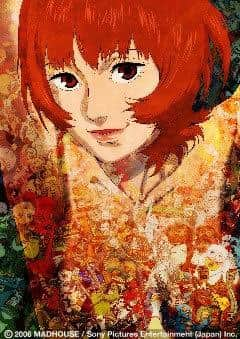The appeal and reviews of "Paprika": A thorough analysis of the moving story and visual beauty

"Paprika": A fantasy world that transcends the boundaries between dreams and reality"Paprika" is a Japanese animated film released in 2006, directed by Satoshi Kon and based on the novel of the same name by Yasutaka Tsutsui. The film depicts a fantastical world where dreams and reality intersect, drawing the audience in with its visual beauty and profound themes. Below, we will introduce detailed information and reviews of "Paprika," as well as recommended points. OverviewPaprika is the story of Chiba Atsuko, a researcher at the General Institute of Psychiatry. She works as Paprika, a "dream detective" who enters other people's dreams and cures their mental illnesses by removing their trauma. One day, the latest psychotherapy device "DC Mini" developed by her colleague Tokita is stolen, and an incident occurs in which members of the institute lose consciousness while awake. Chiba Atsuko begins investigating the incident together with the director and Tokita, but as the boundary between dreams and reality becomes blurred, she herself finds herself in danger. Public Information
storyChiba Atsuko, a researcher at the General Institute of Mental Health, is involved in the development of psychotherapy equipment that can monitor human consciousness, but she also has another face. She is a dream detective called "Paprika" who enters other people's dreams and cures their mental illnesses by removing their trauma. One day, three of the latest mobile model "DC Mini" developed by Atsuko's colleague Tokita are stolen, and strange incidents begin to occur in which members of the institute lose their consciousness while awake. She begins investigating the incidents together with the director, Tokita, and others... CommentaryThe film is based on a science fiction novel by Yasutaka Tsutsui, which depicts a fantastical world where reality and dreams intersect. Director Satoshi Kon, who is also a fan of Tsutsui's work, made the film adaptation of this work, which was considered difficult, a reality with its detailed, gorgeous visual beauty and tricky scene changes. cast
Main Staff
Theme songs and music
Evaluation and Impressions"Paprika" has been highly praised for its unique visuals and storytelling. In particular, director Satoshi Kon's beautiful cinematography and tricky scene changes provide visual surprises and excitement. In addition, the theme of the boundary between dreams and reality encourages the audience to think deeply. Below are some specific points of evaluation. 1. Visual beauty and directionDirector Satoshi Kon's works have always been known for their beautiful images and unique direction, and "Paprika" is no exception. In the scenes where dreams and reality intersect, the colorful visuals and fluid camerawork are impressive. In addition, in order to depict the world of dreams, the film skillfully uses scene changes and perspective changes that would be impossible in reality, drawing the audience in. 2. StorytellingThe story of "Paprika" is complex yet consistent, and the audience will not tire of it. As the boundary between dreams and reality becomes ambiguous, the process in which the protagonist, Atsuko Chiba, solves the case is thrilling, and her growth and conflicts are also depicted. In addition, the film faithfully reproduces the theme of the original work, while adding its own unique interpretation, making it a deep story. 3. MusicThe music by Susumu Hirasawa is an important element in enhancing the atmosphere of the film. In particular, the theme song "Momo Torano no Musume" is a perfect fit for a story that transcends the boundaries between dreams and reality, and has the power to stir the emotions of the audience. In addition, the background music is used appropriately for each scene, creating a wonderful fusion of visuals and music. 4. CastThe voice cast is also impressive, with Megumi Hayashibara receiving particularly rave reviews for her performance as Paprika. Her voice is a perfect blend of the mystical aura of the dream detective and the down-to-earth side of Atsuko Chiba. The rest of the cast also bring their characters to life, helping to add excitement to the story. Recommended pointsPaprika is recommended for the following people: 1. People who want to enjoy beautiful imagesDirector Satoshi Kon's works have always been known for their visual beauty, and Paprika is no exception. In scenes where dreams and reality intersect, the film features impressive, colorful visuals and fluid camerawork, providing visual surprise and excitement. 2. People who want to think deeply about themes"Paprika" has a theme that depicts the boundary between dreams and reality, and encourages the audience to think deeply. In particular, the theme of healing mental illness and trauma is an important issue in modern society, and will give us an opportunity to think deeply. 3. People who want to enjoy musicThe music by Susumu Hirasawa is an important element in enhancing the atmosphere of the film. In particular, the theme song "Momo Torano no Musume" is a perfect fit for a story that transcends the boundaries between dreams and reality, and has the power to stir the emotions of the audience. In addition, the background music is used appropriately for each scene, creating a wonderful fusion of visuals and music. 4. A fan of director Satoshi KonSatoshi Kon's work has always been known for its unique visuals and storytelling, and Paprika is no exception, making it a must-watch for any fan of his. Conclusion"Paprika" depicts a fantasy world that transcends the boundaries between dreams and reality, drawing the audience in with its beautiful visuals and profound themes. In particular, Director Satoshi Kon's unique direction and Susumu Hirasawa's music are important elements in enhancing the atmosphere of the film. The stellar cast of voice actors also play a role in adding excitement to the story, making it a film that can be enjoyed both visually and aurally. This is a film that we highly recommend to fans of Director Satoshi Kon, those who want to consider the boundaries between dreams and reality, those who want to enjoy beautiful visuals, those who want to enjoy music. |
<<: Appeal and Evaluation of "Death Panda": A Fusion of Deep Themes and Visuals
>>: My-Otome Zwei review: A fascinating story and deep characters
Recommend
Yuji Naka said that baby Sonic is cute but it's still weird that his eyes aren't connected
On December 27, the movie "Sonic the Hedgeho...
Michelle Yeoh shares a group photo of the main cast of Shang-Chi, with Simu Liu, Tony Leung Chiu-wai and Yuen Wah appearing
Michelle Yeoh, one of the leading actors of "...
Figure 17 Tsubasa & Hikaru's Appeal and Evaluation: Exploring the Depths of Anime
Figure 17 Tsubasa & Hikaru - In-depth review ...
Tian Xiaopeng, director of Deep Sea: Next film to be shot is Monkey King 2
The animated film Deep Sea, directed by Tian Xiao...
DC's new film "Batwoman" announces sexy lesbian starring role, will link up with Green Arrow and Supergirl
According to foreign media reports recently, DC&#...
The appeal and evaluation of the 1984 version of Salamandra's "Minna no Uta"
Salamandra - Everyone's Song (1984 Edition) -...
Draw a card on my turn! The anime "Yu-Gi-Oh! Sevens" announced to be broadcast in April next year
At the JumpFesta 2020 anime exhibition held today...
Tomica Hyper Rescue Drive Head Mobile Emergency Police - The appeal and evaluation of emergency action
Tomica Hyper Rescue Drive Head Mobile Emergency P...
The TV series "Legend of the Galactic Heroes" officially announced that iQIYI and Linghe will jointly produce
Today (May 10), the TV series of the fictional hi...
The appeal and reputation of HUNTER×HUNTER: A story of adventure and growth
HUNTER×HUNTER - Hunter x Hunter - Reviews and Rec...
"You're Under Arrest the Movie" review: A perfect balance of laughter and emotion
"You're Under Arrest the Movie" - A...
The 30th anniversary promotional video of the new "Crayon Shin-chan" animated film will be released on April 22
The latest work in the series, the new "Cray...
The new movie version of "Sword Art Online" is scheduled to be released on September 10th, and the first poster is released
The official release date of the new theatrical v...
A natural cave entrance in an island country looks like a Totoro, sparking heated discussion
Master Hayao Miyazaki's masterpiece "My ...
Nanami-chan's appeal and reviews: Is it a new anime masterpiece?
"Nanami-chan" - The appeal of the short...









